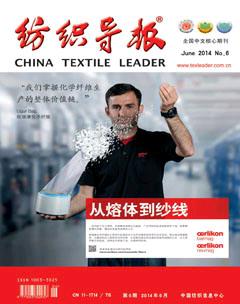多组分混纺纱线的开发与生产
编者按:纺纱企业积极采用多组分纤维开发新型纱线来取代常规纱线生产,是纺纱企业调整产品结构和产品升级的必然趋势,尤其是缺乏棉花资源与劳动力的沿海地区更显迫切。多组分混纺纱线具有许多优势,多种纤维组合可以取长补短,充分发挥出每一种纤维的性能,使纱线的品种更丰富、纱线的使用范围更广,避免了产品同质化竞争,能使企业增加盈利空间。但因各种纤维均具有不同的特性,可纺性和对生产环境要求也不同,因此对企业的各项管理提出了更高要求,要及时了解产品变化信息,及时开发市场需求的新产品,同时要优化纺纱工艺,加强基础管理工作,使生产的每一种纱线质量稳定。
Editors note: Nowadays, more and more textile enterprises are using multi-component fibers to develop novel yarn to substitute conventional yarn and this has become an inevitable trend for spinners, especially those in the eastern coastal regions where there is a shortage of cotton and labor resources, in their process of readjusting product mix and upgrading production quality. Multi-component blended yarn have many advantages, as different fibers can complement each other and each fiber can play its particular role in the yarn, consequently helping enterprises diversify yarn products, extend application scope of the yarn, avoid the competition due to homogeneous products and increase profit margin. However, the spinnability and the requirements on production conditions for different multi-component blended yarn vary according to different properties of different fibers. This has posed higher requirements on enterprisesmanagement in various aspects. So it is necessary for enterprises to timely learn information on product changing, quickly respond to the demand on market, optimize spinning process, strengthen basic management, so as to ensure consistent quality of each kind of yarn.

